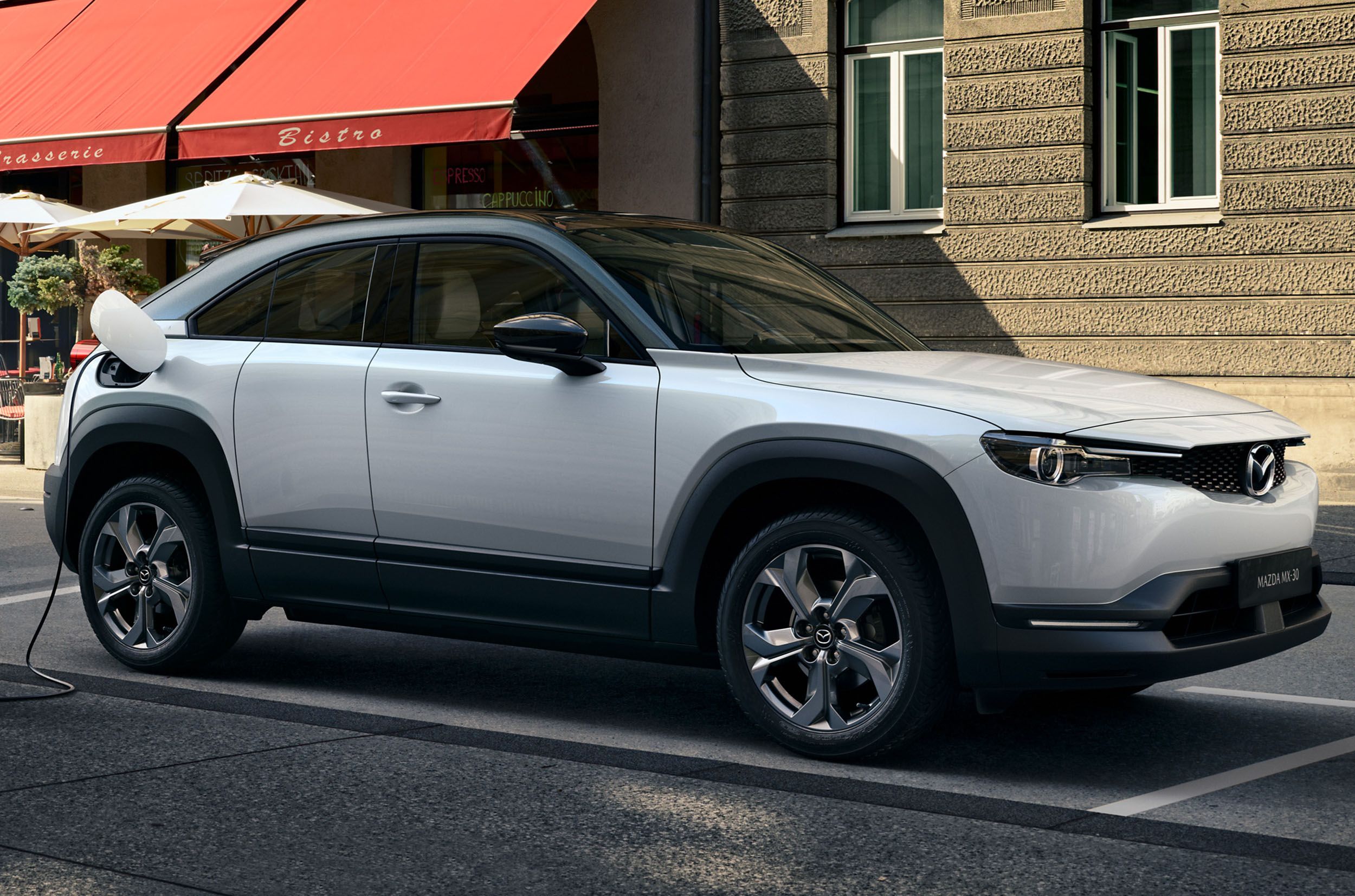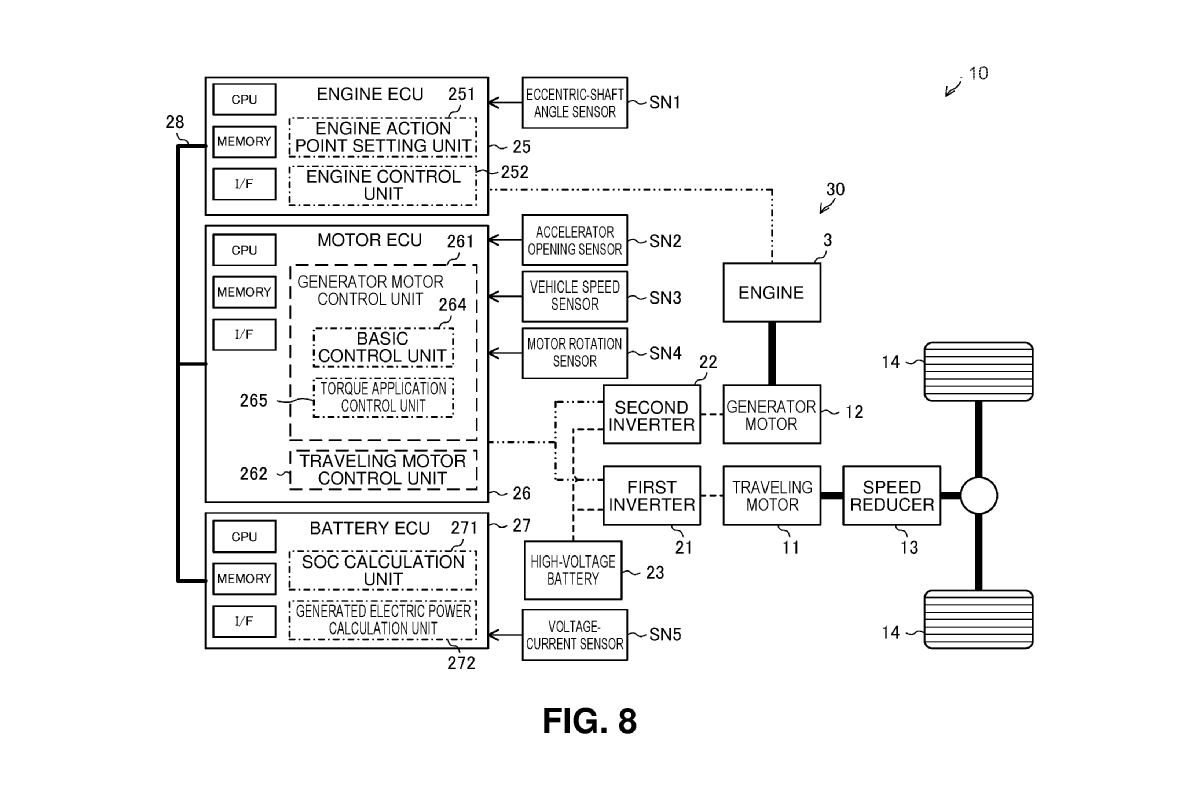Mazda might have already confirmed a rotary engine as a range extender for the MX-30 electric crossover, but CarBuzz has now uncovered unique details about the specifics of this compact rotary engine through patent filings with the United States Patent and Trademark Office (USPTO).
Not only does the patent explicitly state that its intended use is as a range extender in an EV, but it also showcases some very unusual techniques with which Mazda aims to coax improved efficiency out of the whirring Dorito. Specifically, Mazda has reinvented the concept of variable valve timing for a rotary range extender, although the way in which it's been done is what's most remarkable, and confusing.
Range extenders are a fairly common idea. Useful in EVs with relatively small batteries, such as the MX-30, they are a more efficient use of an internal combustion engine operating in an ideal range to permanently generate peak power relative to the amount of fuel consumed. The idea behind Mazda's rotary is a single-rotor engine that is particularly compact and lightweight.
According to the patent, the first step towards optimizing the new rotary's efficiency is by employing a dual-intake port arrangement. The rotor tip passes the primary port first before passing the secondary port a little further in its rotation. The secondary port prolongs the "intake stroke," allowing more air into the combustion chamber in high-power demand situations.
However, the secondary port also interferes with low-speed efficiency, so Mazda added a throttle valve to close it off in low-power conditions. This has the same effect as altering the valve timing on a piston engine and improves the rotary's breathing efficiency over a wider speed range. Following along? Good. Now the next part is where it gets confusing.
The really interesting thing about the range extender's control system is the addition of an electric motor to assist the rotary engine. Driven from the high-voltage traction battery through its own inverter, the assist motor can apply either positive or negative torque to the rotary engine's output shaft during the intake stroke, either momentarily speeding the rotor up or slowing down its rotation to optimize the intake charge entry into the combustion chamber.
This effectively prolongs or shortens the intake stroke, without traditional VVT mechanisms, which Mazda says aren't able to be viably packaged with a rotary engine of this nature.
Obviously, these impulses will introduce strange oscillations to the engine's rotor, but, because the rotary engine is only used to generate electricity and is not connected to the drive wheels, these speed variations shouldn't be noticeable while driving, and the average engine speed remains more or less constant.
Far more than just adapting the rotary engine for use as a range extender, Mazda has essentially added variable cam timing to a camless engine. A lot of research was done over the years in attempts to clean up and improve the rotary's efficiency, and it is clear that a lot of that research has been applied to this range extender version.
The concept seems counterintuitive to us that you would want to impede the momentum of a rotary engine, which is famously one of its benefits compared to a reciprocating piston engine. Especially when you consider technology like the Koenigsegg Freevalve system could be similarly applied to create even more valve timing variation without impacting the rotary's basic action.
Just how well it will work in practice remains to be seen, but Mazda's dedication to this zombie engine type has to be admired, as it's unlikely buyers of range-extended EVs will care about the engine type in use.


